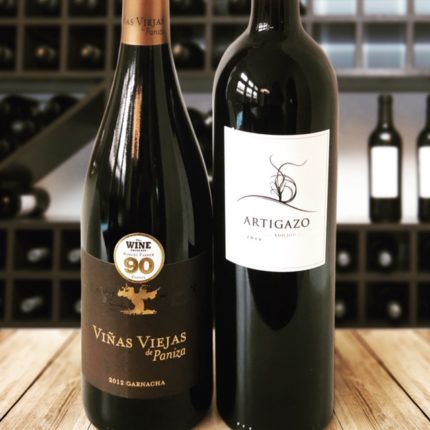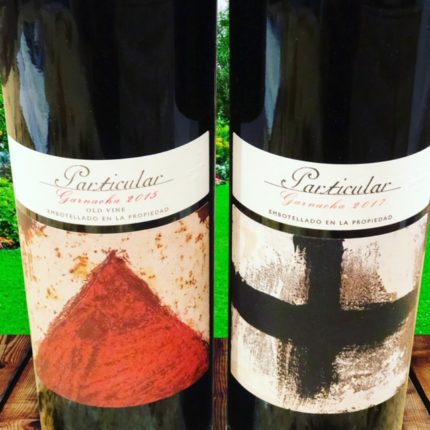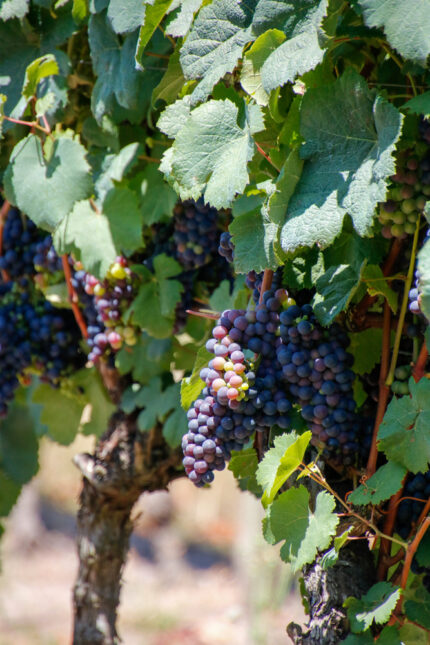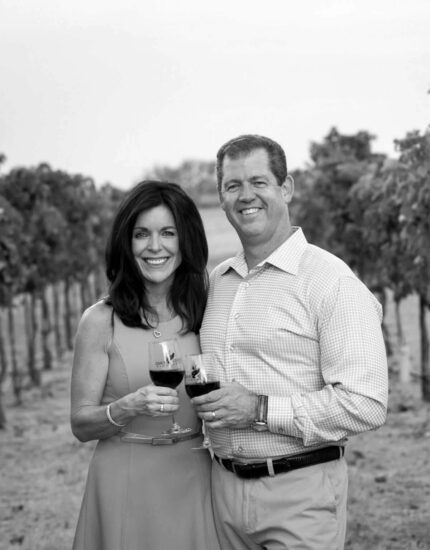To truly explore this grape, you need to begin with a focus on Cariñena, a Spanish wine region located in the heart of the Ebro Valley in Spain’s northeast region of Aragón. The area is bordered by the Pyrenees and France to the north, and Catalunya to the east. While the region was not named a D.O.P. until 1932, monks have been making wine here since the 1400s and this region is known as the birthplace of this grape dating back to the Roman era. The region is planted at high altitude – usually in the 1,800 to 2,000-foot range — and the vineyards benefit from extreme day-to-night temperature differences, ideal conditions for wines crafted from layers of rock, mineral, and earth. These soils saved the region from Phylloxera blight in the 1860s.
Lyn Farmer, the James Beard Award-winning wine and food writer and WSET Instructor, guided us through the many facets of Garnacha and D.O.P Cariñena. If you want to really geek about Garnacha, here’s a video showcasing seminars and panelists’ insights from The Global Garnacha Summit.
As we explored the region, I realized how close I had come during my trips of Madrid and Barcelona, yet I completely missed the chance to visit such a historic wine region. Garnacha is one of the oldest vines in Spain and it is the second largest producer after France. Our first week we focused on Grandes Vinos, who works with five winery partners in each of the 14 areas of D.O.P. Cariñena to vinify fruit from 10,000 acres of vineyards. These co-ops produce a majority of the Cariñena Garnacha from “old vine” vineyards that are 50-100 years old.
We tried two wines including:
- 2017 El Circo Garnacha, a 100 percent Garnacha filled with black fruit, spice, black pepper and herbs. Value priced at $9.99, this is a heck of deal and drinks like a much more expensive wine.
- 2016 Monasterio Old Vine Garnacha, a 100 percent Garnacha had notes of cracked pepper, plum, black tea, smoke, leather, cigar, blackberry, savory meat, fig and dark chocolate. It was nuanced and big and another great wine for $17.99.
The next week we focus on Bodegas Paniza, a winery where the same family growers have cared for the vineyards since 1953. We tried two wines including:
- 2012 Viñas Viejas de Paniza Garnacha, this 100 percent Garnacha had notes of black fruit, dried plum, spice and rose petals. The average vines are aged 50 years and you could tell the difference between these Old Vine wines and the younger ones we tasted the week prior. This was another bargain priced between $15-20.
- 2014 Artigazo Edicion Limitada – this was a blend of 40% Garnacha, 30% Syrah, 30% Cabernet Sauvignon and had a rich, satin-like texture. I tasted notes of black fruit, earth, spice, flowers, granite and menthol. This was another winner priced between $20-$25.
The final week we tasted wines from Bodegas San Valero, a winery that has the longest history in Cariñena and was established in 1944. We tried two wines that kept the value theme alive and well.
- 2017 Bodegas San Valero Particular Garnacha, a 100% Garnacha blend with notes of raspberry, red currant, blackberry, spice, granite and cloves. Priced between $8.99-$10.99.
- 2015 Bodegas San Valero Particular Old Vine Garnacha – this 100% Garnacha has notes of spice, plum, leather, black fruit and cassis. Priced between $10-$15.
I then jumped to a sustainable wine tasting of Garnacha/Grenache wines led by Christy Canterbury, a Master of Wine, journalist, speaker, who led us in a chat about the Sustainable Wines of Garnacha.
Christy talked about how the first known written reference about these wines dates back to 1513 underscoring how important they are in the world of wine. We tried five wines, one which was a repeat of the 2017 Bodegas San Valero Garnacha. Here was our line-up:
- 2017 Domaine Lafage ‘La Grande Cuvée’ Côtes du Roussillon Rosé – this blend of 70% Grey Grenache and 30% Mourvedre was one of my favorite rosés I tried all year. I tasted floral notes, lime, orange, strawberries and some minerality. I loved the finish and the acidity. This was $18.
- 2016 Viñas del Vero ‘La Mirande de Secastilla’ Blanco 2016, Somontano, this 100 percent Garnacha Blanca had notes of pear, apple, peach, melon and a nice minerality. This was priced at $12 and was a great choice in whites.
- 2015 Mas Amiel ‘Altair’ Côtes du Roussillon Blanc – this blend of Withe Grenache, Grey Grenache and Maccabeu was really interesting. Christy talked about how it is often stylistically compared to a Chardonnay because of its diversity. I tasted lime zest, almonds, oyster shell and white flowers. Great layers and depth. This wine is priced at $21.
- 2017 Bodegas San Valero ‘Particular’ Garnacha 2017, Cariñena – (see above)
- 2011 Las Moradas de San Martín ‘La Sabina’ 2011, Madrid, this 100 percent Garnacha is named after an interior castle and I tasted notes of black fruit, fennel, chocolate licorice, red fruit and spice. This is priced at $14.
Across the board, however you refer to this grape – Garnacha or Grenache, you have to love the diversity, value and quality that you will find, especially when you look across Spain and in the Cariñena region.








